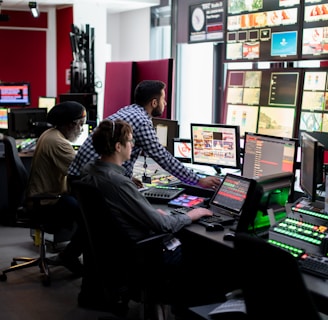Transforming Spaces: Why Occupant experiences need Technological innovation
Technology has drastically improved individual lives, but the evolution of spaces for human activity has lagged behind. To bridge this gap, innovative solutions like smart building systems and proptech platforms are emerging, offering integrated solutions that address a wide range of use cases, from smart parking and access control to energy optimization and amenities booking. By leveraging technology to create seamless and engaging spatial experiences, we can unlock the full potential of our environments and enhance the quality of our lives.
12/3/20242 min read


The Impact of Technology on Gen X, Y, Z and beyond
Technology has significantly changed human lives over the decades, often in ways that are both profound and far-reaching. From the evolution of the modern television to the extensive capabilities of today’s entry-level laptops, we observe a pattern of massive improvements that come at ever-decreasing costs. For instance, while a basic laptop now possesses capabilities that far exceed those of early mainframe computers, it is also accessible to a wider demographic at a fraction of the price. This trend highlights how technology not only scales in utility but also in value, providing users with powerful tools that greatly enhance their daily lives. This leads to economic growth while improving living standards and ultimately, human lives.
The Discrepancy in Technologies for Spaces
However, when we shift our focus to spaces for human activities like working or living, a contrasting narrative emerges. The cost associated with utilising space for various purposes — be it work, stay, leisure, or learning — has grown to the point where it is becoming increasingly out of reach for most people. Human activity is mostly done in structures we call buildings and these buildings need multiple systems to keep them running. However, the complexity and disjointed nature of the user experience associated with using these disparate systems often detracts from the efficiency and enjoyment of these spaces. The architecture of spaces, whether physical or digital, has not kept pace with the advancements in consumer technology that enhance personal and professional goals & expectations.
Bridging the Gap Through Innovative Solutions
The pressing need for improvement in how technology is integrated into spatial experiences cannot be overstated. To ensure that spaces evolve and meet the needs of their users, we must leverage technological advancements that streamline these environments. Solutions such as smart building systems and proptech platforms can empower property managers to provide better user experiences to their tenants and occupants. Such solutions offer promising avenues for creating seamless user experiences, allowing people to navigate spaces in intuitive and engaging ways.
In Commercial Real Estate there are several IWMS software solution providers. However they have a closed model and cater to a few use cases and applications. The need is for an integrated solution that covers a wide range of use cases
Smart self parking (both free and paid)
Valet parking for Mechanised, Assisted and Robotic parking
Universal Access control (using mobile phones instead of smart cards)
Smart Visitor management
AI driven Video Analytics
Smart Lockers / Deliveries management
EV charging
Smart HVAC & Energy optimisation
Cybersecurity and Digital security
Amenities booking (desks, meeting rooms)
Helpdesk/Service requests
Car pool
F&B,
Expenses (scan bills to automatically push them into Expense management software)
Deals (from nearby providers) etc.
Lots more...
In conclusion, while technology has undeniably enhanced various aspects of human life, the user experience in spatial settings remains an area ripe for improvement. By addressing the complexities and disjointed experiences associated with space, we can harness the full potential of technology to create environments that are not only efficient but also enjoyable. The synthesis of innovative technologies within our spaces will pave the way for a future where every user can derive maximum value, pushing the boundaries of how we work, play, live, learn, travel and beyond.
